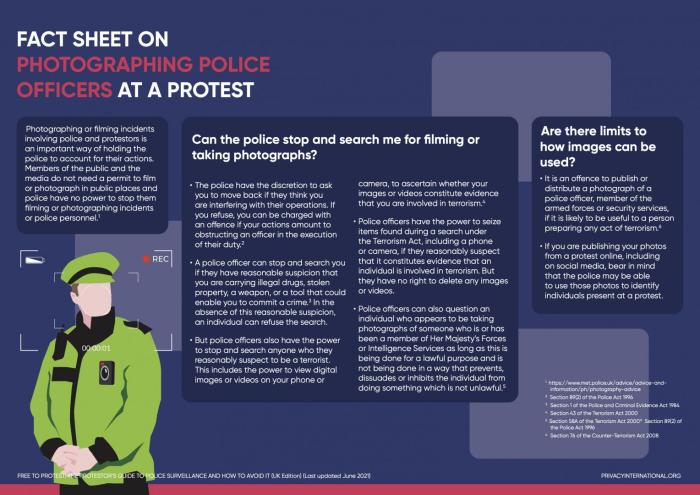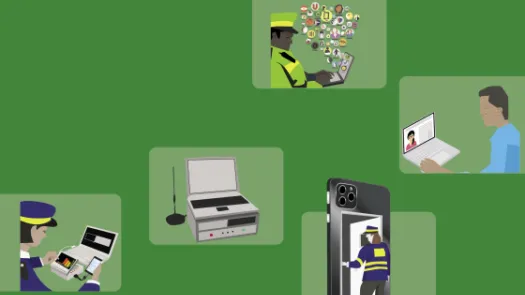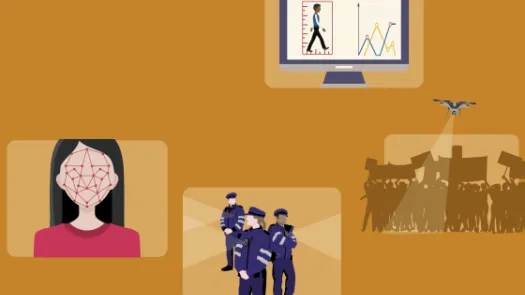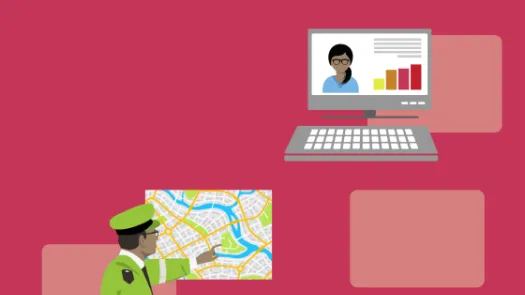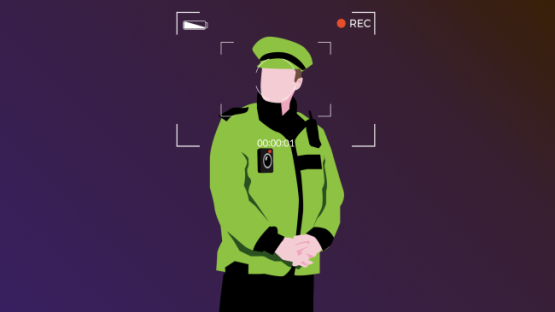
Fact sheet on photographing police officers at a protest
An overview of relevant considerations if and when photographing or filming police at a protest (UK edition).
- There is no power to prevent members of the public or the media from photographing or filming the police, but you can be asked to move.
- In and of itself, taking pictures of or filming police officers does not justify the exercise of stop and search powers.
- There are limited instances in which police officers may lawfully seize and inspect your device.
- It may be an offence to publish or distribute the photograph of a police officer.
- If you are publishing your photos from a protest online, the police may be able to use those photos to identify individuals present at a protest.

Photographing or filming incidents involving police and protestors is an important way of holding the police to account for their actions. Members of the public and the media do not need a permit to film or photograph in public places and police have no power to stop them filming or photographing incidents or police personnel.[1]
Can the police stop and search me for filming or taking photographs?
- The police have the discretion to ask you to move back if they think you are interfering with their operations. If you refuse, you can be charged with an offence if your actions amount to obstructing an officer in the execution of their duty.[2]
- A police officer can stop and search you if they have reasonable suspicion that you are carrying illegal drugs, stolen property, a weapon, or a tool that could enable you to commit a crime [3]. In the absence of this reasonable suspicion, an individual can refuse the search.
- But police officers also have the power to stop and search anyone who they reasonably suspect to be a terrorist. This includes the power to view digital images or videos on your phone or camera, to ascertain whether your images or videos constitute evidence that you are involved in terrorism.[4]
- Police officers have the power to seize items found during a search under the Terrorism Act, including a phone or camera, if they reasonably suspect that it constitutes evidence that an individual is involved in terrorism. But they have no right to delete any images or videos.
- Police officers can also question an individual who appears to be taking photographs of someone who is or has been a member of Her Majesty’s Forces or Intelligence Services as long as this is being done for a lawful purpose and is not being done in a way that prevents, dissuades or inhibits the individual from doing something which is not unlawful.[5]
Are there limits to how images can be used?
- It is an offence to publish or distribute a photograph of a police officer, member of the armed forces or security services, if it is likely to be useful to a person preparing any act of terrorism.[6]
- If you are publishing your photos from a protest online, including on social media, bear in mind that the police may be able to use those photos to identify individuals present at a protest.
You can download this guide as a jpeg by saving the image below, or by downloading the pdf version in ‘Attachments’.
[1] https://www.met.police.uk/advice/advice-and-information/ph/photography-advice
[2] Section 89(2) of the Police Act 1996
[3] Section 1 of the Police and Criminal Evidence Act 1984
[4] Section 43 of the Terrorism Act 2000
[5] Section 58A of the Terrorism Act 2000
[6] Section 76 of the Counter-Terrorism Act 2008
